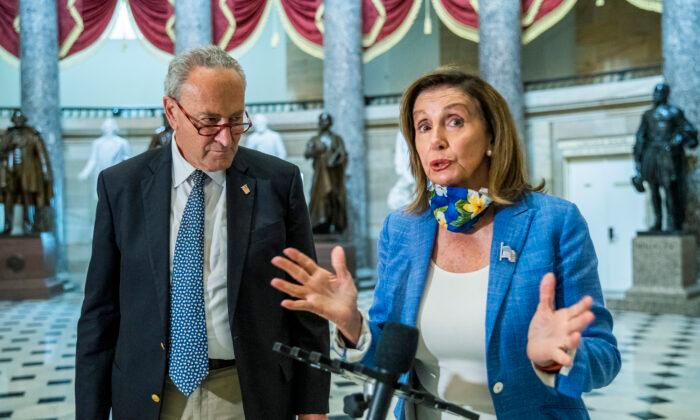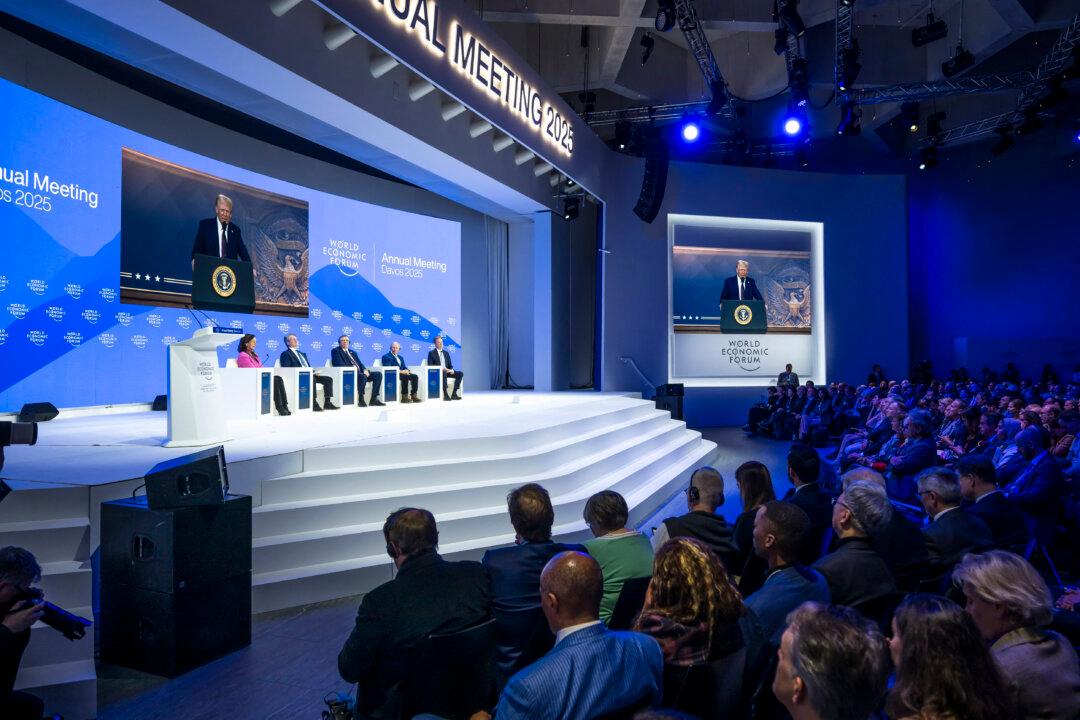WASHINGTON—Wall Street received a boost from President Donald Trump’s new executive orders that extended some pandemic relief. While the relief falls short of expectations, it provides a new incentive for Congress to reach a deal on a broader fiscal package, economists say.
Trump signed four executive orders on Aug. 8, extending extra unemployment benefits, deferring payroll taxes, extending student loan relief, and providing assistance to renters and homeowners through eviction protections.
“The real purpose was to get the Democrats in a better position to compromise,” according to Casey Mulligan, professor of economics at the University of Chicago and former White House chief economist under Trump.
“And I think he did a great job of that,” he told The Epoch Times.
According to Mulligan, the U.S. economic recovery “will be better in many dimensions by not having the stimulus.”
“The president understands this and that’s why he’s not in a hurry to reach a deal.”
Wall Street analysts are still expecting both Republicans and Democrats to make compromises and pass legislation worth around $1.5 trillion this month, as part of federal government support for the economy.
Through the end of the year, Trump’s policies will likely provide nearly $200 billion in fiscal relief, which is mostly temporary, according to Goldman Sachs.
“There is some risk that these orders reduce the urgency of talks on Capitol Hill regarding broader fiscal legislation,” Goldman Sachs chief economist Jan Hatzius wrote in a report. “But we also believe they could motivate congressional Democrats to come closer than they have so far to the Republican offer of slightly more than $1 trillion.”
As of the time of this writing, Democrats and Republicans remain far apart with respect to the size and priorities of the stimulus.
The White House and Senate Republicans have indicated that they would keep the additional spending closer to $1 trillion, while Democrats have pushed for the nearly $3.4 trillion HEROES Act that passed the House in May.
The extra unemployment benefit and support for state and local governments seemed to stand out as sticking points during the talks that collapsed on Aug. 7.
House Speaker Nancy Pelosi (D-Calif.) called Trump’s executive actions “absurdly unconstitutional.”
Democrats may sue to block the orders but legal challenges could be “politically fraught,” according to Hatzius, since most of the orders “accomplish politically popular goals.”
“There is also a good chance that by the time legal action had an effect, the policies would no longer be relevant because Congress might pass legislation supplanting them,” he wrote.
Stocks rallied at the start of the week with renewed optimism surrounding stimulus talks and a potential COVID-19 vaccine.
Despite the ongoing legislative stalemate over a relief bill, Trump said the markets welcomed the executive actions.
“It would have been so much easier than doing it the way we did it,” he said during a press conference on Aug. 10. “But we did something that’s very important. And, frankly, it’s been well received.”
Trump’s executive order extends the enhanced weekly unemployment benefit at $400, instead of $600. And he has directed $44 billion from the Disaster Relief Fund to pay 75 percent of the benefit; the remaining 25 percent would come from states.
Treasury Secretary Steven Mnuchin said during the press conference on Aug. 10 that the payments could be expected “within a week or two.”
Trump’s recent executive action also deferred the collection of the employee-side payroll taxes paid from Sept. 1 through Dec. 31, 2020; the deferral applies to any employee making less than $104,000 per year.
The order also instructs the Treasury Department to “explore avenues, including legislation, to eliminate the obligation to pay the taxes deferred.”
Trump said on Aug. 10 he would take further executive actions to stimulate the economy, including a capital gains tax cut and a tax relief for middle-income families.





